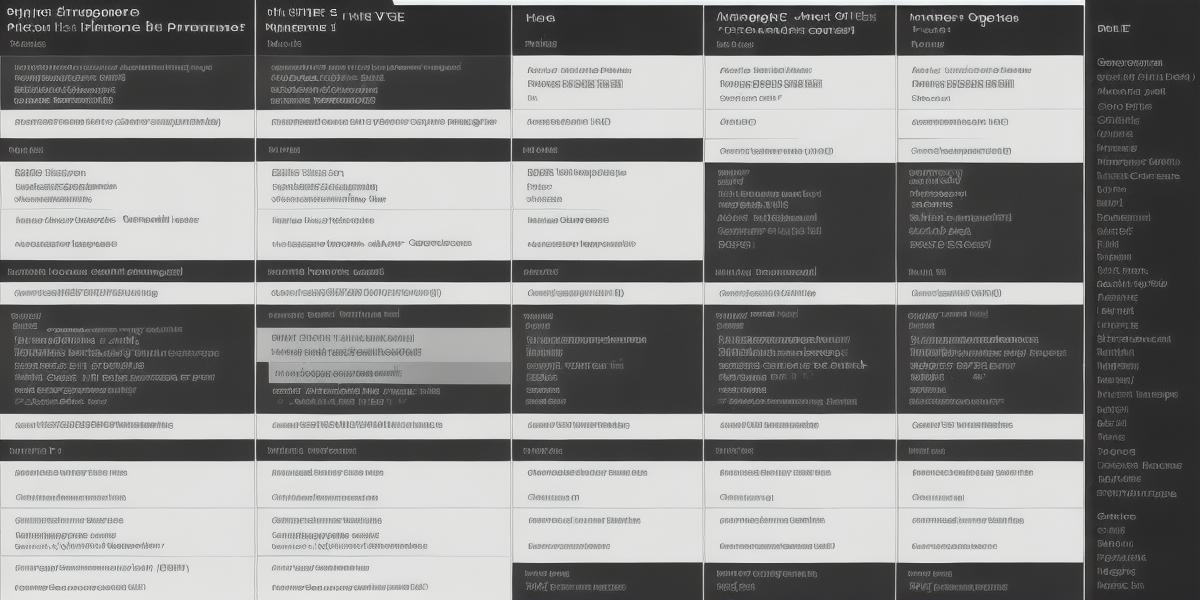Hosted Server vs In-House: Weighing the Options for Programmers

Introduction:
When it comes to hosting, programmers have two main options: hosted servers or in-house servers. Both have their pros and cons, but which option is right for you? In this article, we’ll explore the differences between these two options and help you weigh the pros and cons of each.
Hosted Servers:
Pros:
- Low maintenance: Hosted servers require little to no maintenance on your part. The hosting provider takes care of all the upgrades, backups, and security updates.
- Cost-effective: Hosted servers are often more cost-effective than in-house servers. You only pay for the resources you use, which means you can scale up or down as needed.
- Easy to set up: Hosted servers are typically easy to set up and configure. Most hosting providers offer user-friendly interfaces that make it simple to manage your server.
Cons:
- Limited control: With hosted servers, you have limited control over the infrastructure. You can’t customize the hardware or software to your specific needs.
- Security risks: Hosted servers are vulnerable to security threats, such as hacking and malware attacks. While hosting providers take steps to secure their servers, there’s always a risk involved.
- Downtime: Hosted servers can experience downtime due to server maintenance or outages from the hosting provider. This can be frustrating for programmers who rely on their servers to run their applications.
In-House Servers:
Pros:
- Complete control: In-house servers give you complete control over the infrastructure. You can customize the hardware and software to your specific needs.
- High security: In-house servers are generally more secure than hosted servers. You have full control over the network, which means you can implement stronger security measures.
- No downtime: With in-house servers, you can minimize downtime by scheduling maintenance during off-peak hours. This means you can keep your applications running smoothly without interruption.
Cons:
- High cost: In-house servers can be expensive to set up and maintain. You’ll need to invest in hardware, software, and infrastructure, which can add up quickly.
- Maintenance required: In-house servers require regular maintenance, including upgrades, backups, and security updates. This can be time-consuming and costly.
- Complexity: In-house servers are generally more complex than hosted servers. You’ll need to have technical expertise to set up and manage your server effectively.
Conclusion:
When it comes to hosting, programmers have two main options: hosted servers or in-house servers. Both have their pros and cons, but which option is right for you? If you value low maintenance, cost-effectiveness, and ease of setup, a hosted server may be the best choice. However, if you need complete control, high security, and minimal downtime, an in-house server may be more appropriate. Ultimately, the decision comes down to your specific needs and requirements.
FAQs:
- What is the difference between a hosted server and an in-house server?
A hosted server is managed by a third-party hosting provider, while an in-house server is owned and operated by the organization itself. - What are some of the pros and cons of using a hosted server?
Pros: Low maintenance, cost-effective, easy to set up. Cons: Limited control, security risks, downtime. - What are some of the pros and cons of using an in-house server?
Pros: Complete control, high security, no downtime. Cons: High cost, maintenance required, complexity.








